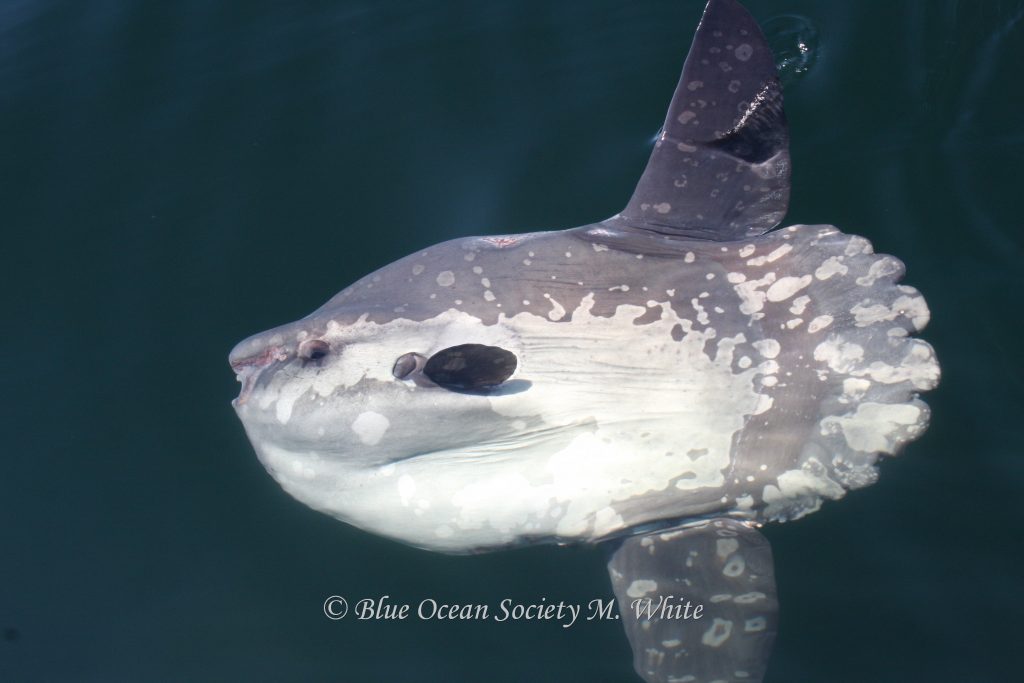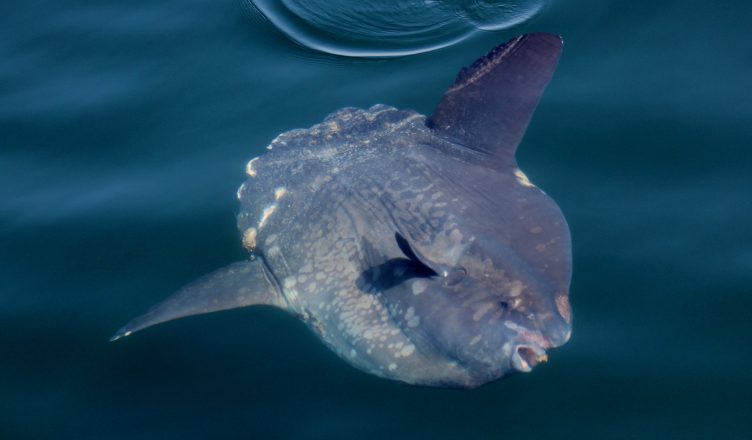As whale watching season starts for us tomorrow, I would like to reminisce on some of our most memorable sightings! This is the first in a series of blogs dedicated to the Unsung Heroes of “whale watching”.
This month’s blog is dedicated to the Ocean Sunfish, also known by its scientific name, Mola mola. The name translates into millstone: a large, round, flat stones used in gristmills for grinding wheat.
The largest species of bony fish on the planet (their skeleton is made from bone vs. cartilage), ocean sunfish measure up to 14 feet in diameter and can weigh over 2000 pounds! The sunfish we see near Jeffreys Ledge are predominantly juveniles, only weighing a “mere” 300-1200 pounds. These huge fish primarily feed on jellies and even have teeth in their throat to capture and shred jellies, similar to sea turtles!

The body of an ocean sunfish is quite unique. They are shaped liked large pancakes with a tall fin extending from their back (dorsal fin), and another long fin below them (anal fin). From a boater’s perspective, an ocean sunfish may look like a shark skimming the surface, but instead of cruising along the surface like sharks, sunfish will lay on their side, slowly moving their dorsal fin back and forth out of the water. Some novice boaters even think that the fish was cut in half since it doesn’t appear to have a tail. Others assume a sunfish is sick or injured due to another physical character: the dozens of types of parasites that live on the rough skin.
So why do we love these crazy-looking fish? Most whale watchers expect to see whales of various sorts, but the Gulf of Maine is home to over 3000 species of marine life. Whale watchers lucky enough to see an ocean sunfish are truly in for a surprise. This unique fish often spends time at the surface and doesn’t seem to be too bothered by boats. Some ocean sunfish will even swim around the boat, making sure everyone on board gets a great look! On one trip, a sunfish came close to the boat and then suddenly dove out of sight. I figured we had spooked it. The captain said, “Wait for it….” And just seconds later the huge fish that doesn’t look like it can even swim very well came leaping out of the ocean! You learn something every day!
When is the best chance to see an ocean sunfish? When the weather is hot. Sunfish are also migratory, spending the winter off the coast of Florida and in the Gulf of Mexico. Up here in the Gulf of Maine, the water has to warm up before the sunfish are typically seen. The chart below shows the number of sunfish sightings around Jeffreys Ledge seen monthly over a period of 16 years. August and September appear to be the clear winners of “best month”, although they can be seen any time from June through October.

Keep in mind that ocean sunfish are also relatively rare to see. In a typical season, we may only see them on 3-5% of our whale watching trips!
Want to see a sunfish for yourself? Book a trip on a whale watch! You just never know what you will see on the ocean!






